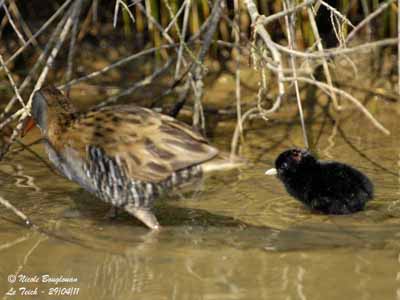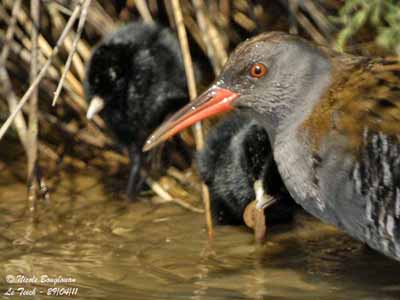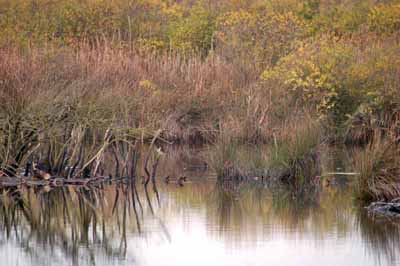
Text and pictures by Nicole Bouglouan
From personal observation in wild
Sources:
HANDBOOK OF THE BIRDS OF THE WORLD Volume 3 by Josep del Hoyo-Andrew Elliott-Jordi Sargatal - Lynx Edicions - ISBN : 8487334202
ENCYCLOPEDIE DES OISEAUX DE FRANCE ET D’EUROPE – de Peter Hayman et Rob Hume - Flammarion – ISBN : 2082009920
L’ENCYCLOPEDIE MONDIALE DES OISEAUX - Dr Christopher M. Perrins - BORDAS - ISBN: 2040185607
THE COMPLETE BOOK OF BRITISH BIRDS – Written by “Royal Society for the Protection of Birds” experts - Préface de Magnus Magnusson - Michael Cady- Rob Hume Editors - ISBN: 0749509112
The Water Rail in its environment
(Rallus aquaticus)
Very elusive bird, the Water Rail is part of the wetland habitats, often walking actively in shallow water, searching for preys around ponds, pools and marshes.
Secretive but not really shy, it forages from tussock to tussock, probing the soil with its long bill and sometimes submerging the whole head under water.

The cryptic plumage, chestnut and black upperparts, slate-grey underparts and streaked flanks, provides it good camouflage among the reeds by blending in with the background. But sometimes, when the bird plays hide-and-seek with us, the red bill and eyes betray its presence.
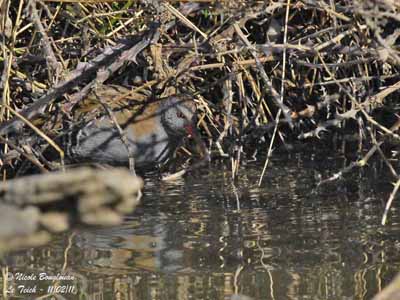
Seen in profile, this bird may appear rather plumpish, but from behind, its body is conspicuously slim. This slender figure allows it to enter the thick marshy vegetation where it can hide if disturbed. It worms its way between the reeds, gliding without touching them, and may remain invisible for a moment, protected by the shade and the thickness of the plants. But usually, after a few minutes, its cuts a path through the stems and continues to forage along the shore.
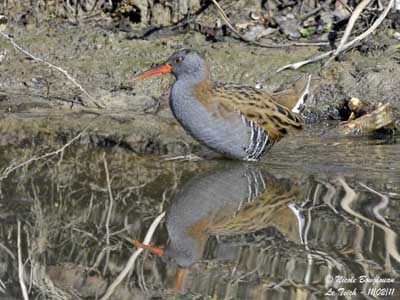
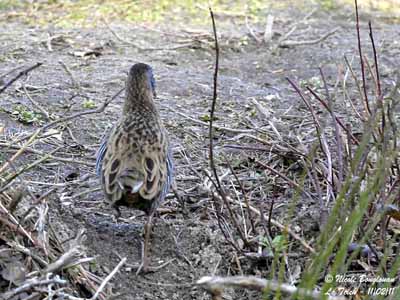
The Water Rail feeds mainly on aquatic invertebrates and small vertebrates such as insects and their larvae, worms, molluscs, small fish, crustaceans and grubs. It also forages in drier areas but always near water. Amphibians and small rodents, carrion and plant matter, including berries and fruits are part of its omnivorous diet.
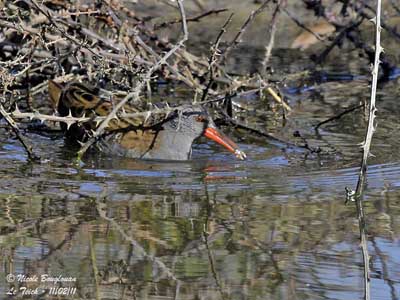
This interesting bird is often seen alone. It performs determined steps in shallow water and muddy areas thanks to the long legs and toes, pecks at the surface and probes the soil, enters the vegetation and comes out again. It submerges its head under water for a few seconds, sometimes to the upper back, and catches the prey with the sensitive bill tip.
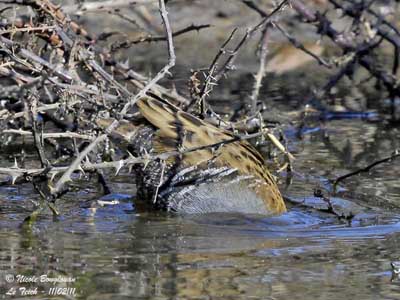
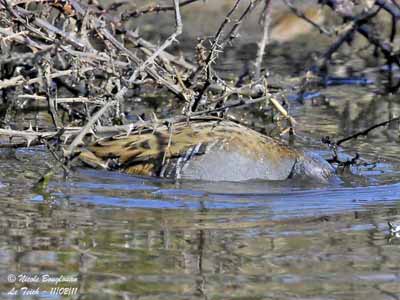
As many other birds’ species, the Water Rail has a translucent nictitating membrane which protects its eyes in the water.
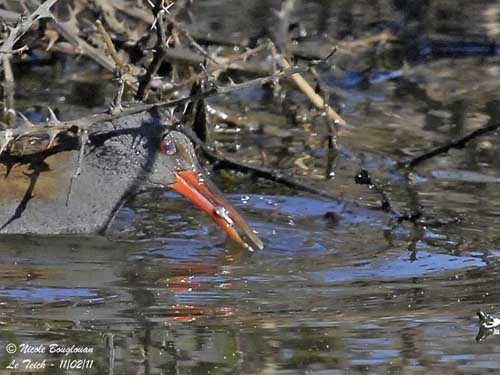
Another important fact, this bird swims very well and fast but rarely dives. It can feed while swimming, taking aquatic items from the surface.
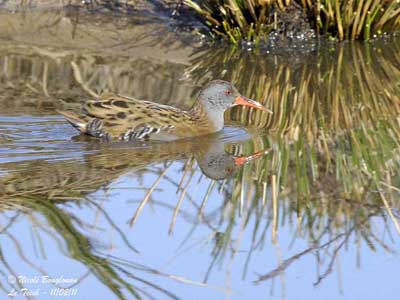
The Water Rail is stunning by its behaviour within its wet environment. This bird is more often heard than seen, and its strange calls stop as it reaches the cover of the reedbed.
This type of habitat provides it food and protection for nesting and against the predators. The Western Marsh Harrier is probably the main danger for this species. For this reason, when the rail slips quickly into the marshy vegetation, even the reed heads do not move, making the bird invisible.
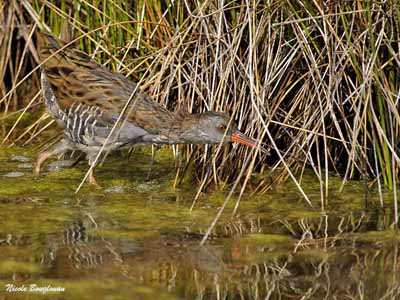
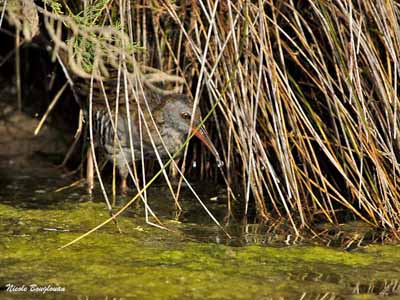
The Water Rail is a typical inhabitant of the wet areas. Very dependent on the water, it is adapted to these landscapes. It is able to swim, run, walk, and fly within this humid world for our pleasure, when after long time expecting its visit, our patience is rewarded by a superb observation of its behaviour.
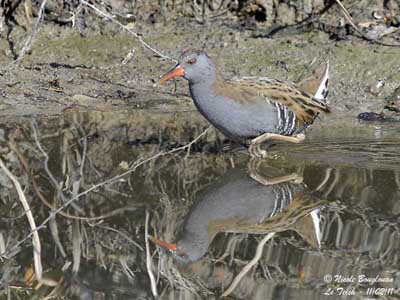
During the breeding season, the Water Rail nests on the ground, among the marshy vegetation in reedbeds. The nest is made with dead leaves and stems, near or in water.
After about three weeks of incubation by both adults, the chicks hatch and are precocial. They are covered in black down. A red patch of bare skin is visible on the hindcrown. The bill is whitish, the eyes are dark brown, legs and feet are grey-brown to blackish.
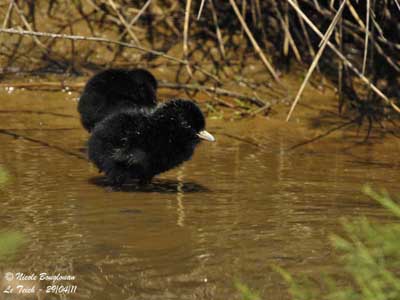
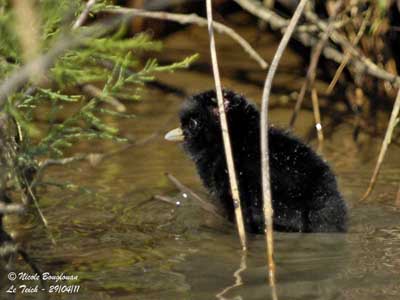
They can feed themselves at five days and follow their parents while they forage in shallow water along the vegetation of the marshes.
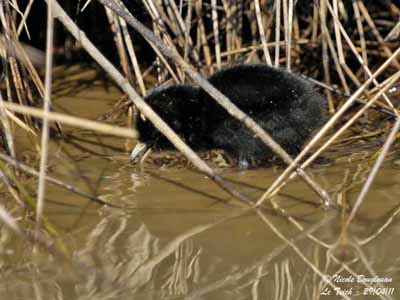
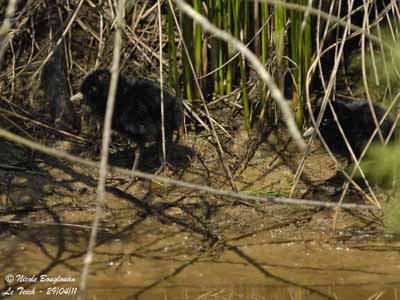
Both parents feed and care them during 20-30 days after hatching. They are independent and able to fly at 7-8 weeks of age and can breed at one year.
